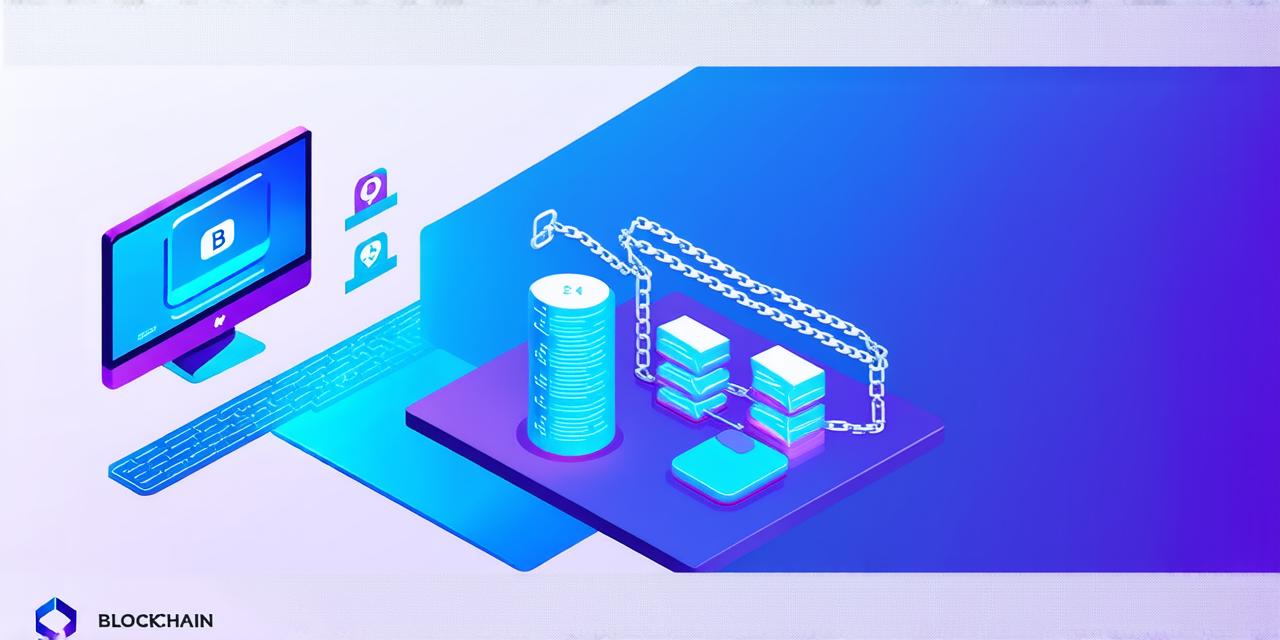As a developer, you may have heard about blockchain technology and its potential to revolutionize industries such as finance, healthcare, and supply chain management. But do you truly understand what blockchain is and how it works? This comprehensive guide will help you understand the basics of blockchain technology and how it can benefit your work as a developer.
What is Blockchain?
Blockchain is a decentralized database that allows for secure, transparent, and immutable transactions without intermediaries. It is essentially a distributed ledger that records all transactions on multiple computers in a network. Unlike traditional databases, which are managed by a central authority, blockchain relies on consensus algorithms to ensure the integrity of the data.
How does Blockchain work?
At its core, blockchain consists of blocks that contain batches of transactions. Each block is cryptographically linked to the previous one, forming a chain of blocks or a blockchain. This ensures that any changes made to the data in one block will be reflected in all subsequent blocks, making it virtually impossible to tamper with the data.
Each block contains several pieces of information, including:
- A timestamp: This is the date and time when the block was created.
- A unique cryptographic hash: This is a digital fingerprint that identifies the block and ensures its integrity.
- A list of transactions: These are the batches of transactions that have been verified and added to the block.
- A reference to the previous block: This is a link to the previous block in the chain.
To add new transactions to the blockchain, miners (individuals or organizations that validate transactions) use complex mathematical algorithms to verify the transactions’ authenticity and ensure they meet certain criteria. Once verified, the transactions are added to a block and broadcasted to the network. The other nodes in the network then validate the block and add it to their own copy of the blockchain, creating a consensus.
Benefits of Blockchain Technology
Blockchain technology has several potential benefits for developers, including:
- Increased security: With its decentralized nature, blockchain eliminates the need for intermediaries, reducing the risk of hacking or fraud. Transactions are secured using cryptography, making it nearly impossible to alter or delete data.
- Improved transparency: All transactions on the blockchain are visible to everyone in the network, providing a high degree of transparency. This can be particularly useful in industries such as finance and healthcare, where accountability is critical.
- Reduced costs: Blockchain eliminates intermediaries, reducing transaction fees and other associated costs. For example, sending money across borders using traditional banking methods can be expensive, but with blockchain-based payment systems, these costs are significantly reduced.
- Increased efficiency: Traditional databases require centralized management, which can be slow and inefficient. Blockchain’s decentralized nature allows for faster transaction processing times, reducing the need for intermediaries and increasing efficiency.
- Improved data integrity: With its immutable nature, blockchain eliminates the possibility of data tampering or manipulation. This can be particularly useful in industries such as supply chain management, where data accuracy is critical.
Real-life examples of Blockchain Technology
Blockchain technology has already found several real-life applications across various industries, including:
- Cryptocurrency: The most well-known example of blockchain technology is Bitcoin, a cryptocurrency that uses blockchain to facilitate transactions between individuals. Other cryptocurrencies such as Ethereum and Litecoin also use blockchain technology.
- Digital Identity Management: Blockchain technology can be used to create secure and decentralized digital identity management systems. This can help reduce the risk of identity theft and increase data privacy.
- Supply Chain Management: Blockchain can be used to track products from their point of origin to their final destination, providing transparency and accountability in supply chain management.
- Voting Systems: Blockchain technology can be used to create secure and transparent voting systems that eliminate the possibility of fraud or tampering.
- Healthcare: Blockchain technology can be used to securely store and share medical records, reducing the risk of data breaches and improving patient privacy.

FAQs
Q: What is the difference between blockchain and a traditional database?
A: The main difference between blockchain and a traditional database is that blockchain is decentralized, while traditional databases are centralized. This means that blockchain relies on consensus algorithms to ensure data integrity, while traditional databases rely on central authorities.
Q: How secure is blockchain technology?
A: Blockchain technology is considered to be very secure due to its decentralized nature and the use of cryptography to secure transactions. Once data is added to the blockchain, it is nearly impossible to alter or delete.
